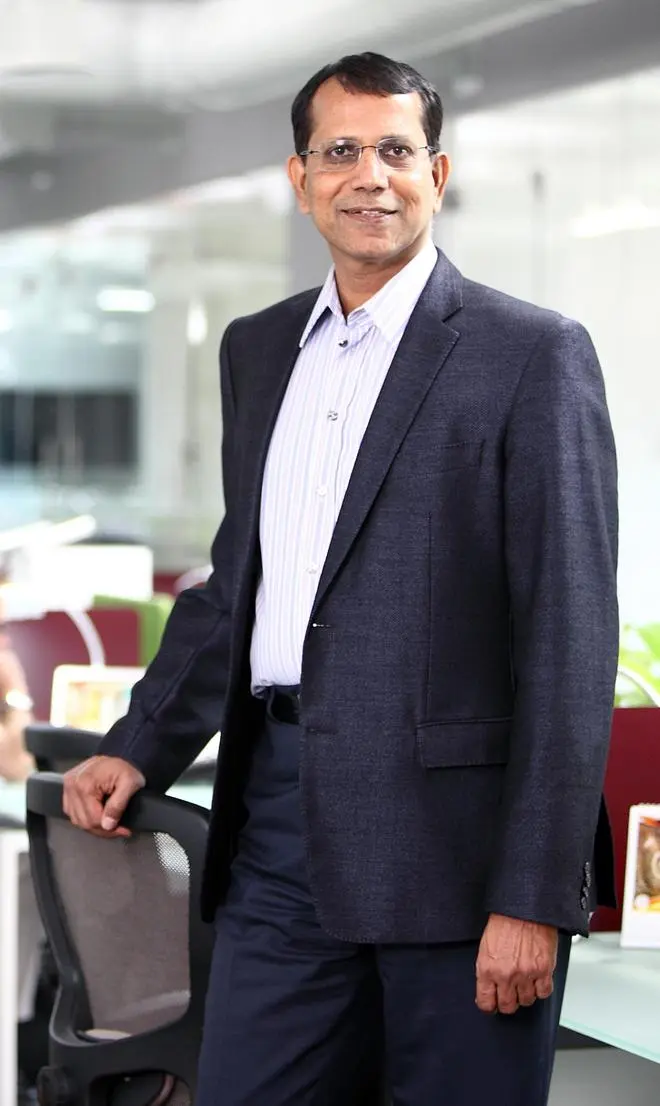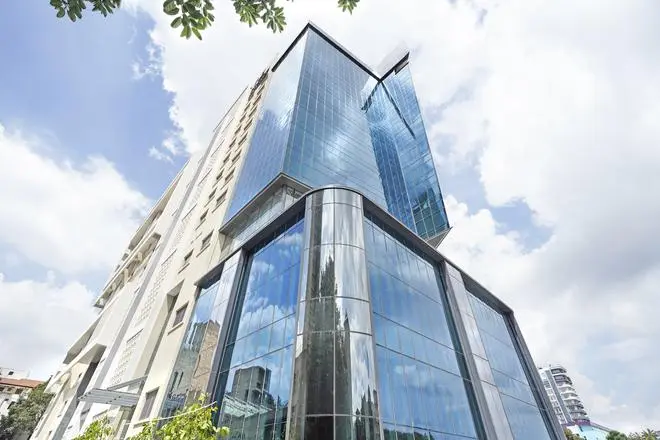It is said that about 70 per cent of buildings that will be standing on earth in 2030 are yet to be built. Given that buildings, both in conventional construction and operations, have a large carbon footprint, they are a veritable sweet spot for greening. Saint-Gobain believes it sits plumb in that sweet spot.
Saint-Gobain, the 358-year-old French manufacturer of plasterboard and glass — which supplied glass for the iconic Louvre Museum in Paris — is excited that its products have a natural fit with low-carbon construction.

B Santhanam, CEO, Asia-Pacific and India region, and Chairman, Saint-Gobain India
“Lighter buildings,” says B Santhanam, CEO, Asia-Pacific and India region, and Chairman, Saint-Gobain India, “take less energy while building and hence less carbon dioxide. The trick in low-carbon construction is to use materials that are lighter and have less carbon embedded in them, which essentially mean glass for facades, walls and windows and plasterboards for inner partitions.”
Reducing carbon footprint
Pointing out that it is very hard to bring down the carbon footprint of steel or cement, Santhanam explains that the next best thing to do is to see how less of these materials could be used. “The construction industry represents the single biggest opportunity to reduce carbon footprint,” he says.
Saint-Gobain, which has been in India for a quarter century, is now anticipating more pep in its sales from India. It is ratcheting up its capacity and making its manufacturing process low-carbon. A billion dollars — roughly two-thirds of its turnover in 2022 — is going into this investment plan for the period 2021 to 2025. The company is attacking carbon on two fronts — one, making the manufacturing process less carbon emitting and two, bringing down the embedded carbon in its products.
Making glass starts with melting sand (or recycled broken glass called ‘cullets’) and letting the transparent liquid float on a flat surface to slowly solidify into glass. Even if one tiny air bubble creeps in, the entire sheet has to be thrown back into the furnace. Melting it again means furnaces that guzzle a lot of energy to generate the required 1,600oC degrees of heat.

Furnace at Sriperumbudur
Santhanam’s target is to reduce, by 2030, the carbon intensity of the manufacturing process by 33 per cent of what it was in 2017. This is a tall order, because the volume of production is slated to triple by 2030. Currently, the company produces 90 mn sq metres of plasterboards and 1.3 mn sq metres of glass, which gave the company a sales revenue of ₹12,300 crore in 2022. To illustrate, if 2017 emissions are taken as 100, then reducing it by a third would mean bringing it down to 67. However, by 2030, production would have tripled, so emissions would, in a business-as-usual scenario, correspondingly increase to 300. However, the target still remains at 67. This means, Saint-Gobain would have to bring down the carbon intensity of its operations by 76 per cent.
The green mix
To achieve this, Santhanam says that the company would switch to electricity-powered furnaces from the natural gas-fired ones, while at the same time, building wind and solar plants. Fortunately, one of the float lines is up for replacement. A new float line is being put up, which will be “30 per cent electrically fired”. This, he says, has never been attempted before. Green hydrogen, as and when it becomes available, would be pressed into service. Saint-Gobain would find green hydrogen viable if it is priced at $2.5 a kg, Santhanam says. “We believe that in the coming years, 50 per cent of the furnace energy would come from electricity — preferably green electricity — and hydrogen.”

World Glass Complex at Sriperumbudur
But why only 30 per cent as electrically fired? Why not 100 per cent? This question has attracted the attention of global glass players. Saint-Gobain and Japanese firm Asahi Glass are on to a joint R&D programme to develop a 100 per cent electricity-fired furnace for making glass. To slash the embedded carbon in its material, a few tricks are being tried out. For instance, instead of calcium carbonate, the company is switching to wollastonite. Wollastonite is a compound of calcium, silicon and oxygen — no carbon. It has a 3 per cent lesser carbon footprint compared with calcium carbonate, and takes 2 per cent less energy to melt it.
Alongside, Saint-Gobain is bringing in recycled materials instead of virgin. The company is working with a Chennai-based start-up, which processes demolition waste to make fresh construction material.

Saint-Gobain, which is also in insulation materials, is keen on start-ups. It has taken equity positions in a number of them. Recently, the company concluded the takeover of Twiga, an Uttar Pradesh-based company that makes glass wool, under a Saint-Gobain license. This was a big acquisition, worth ₹400 crore. In December 2021, it completed a ₹150-crore acquisition of Rockwool India, another Saint-Gobain licensee, which makes stone wool, used in thermal, acoustic and fire safety applications.
Saint-Gobain is present in 76 countries. Each year, the HQ gives a sole sustainability award to one of the 76 units. Last year, it was won by Saint-Gobain India. Clearly, the Indian operations is looking through the right glass.








Comments
Comments have to be in English, and in full sentences. They cannot be abusive or personal. Please abide by our community guidelines for posting your comments.
We have migrated to a new commenting platform. If you are already a registered user of TheHindu Businessline and logged in, you may continue to engage with our articles. If you do not have an account please register and login to post comments. Users can access their older comments by logging into their accounts on Vuukle.